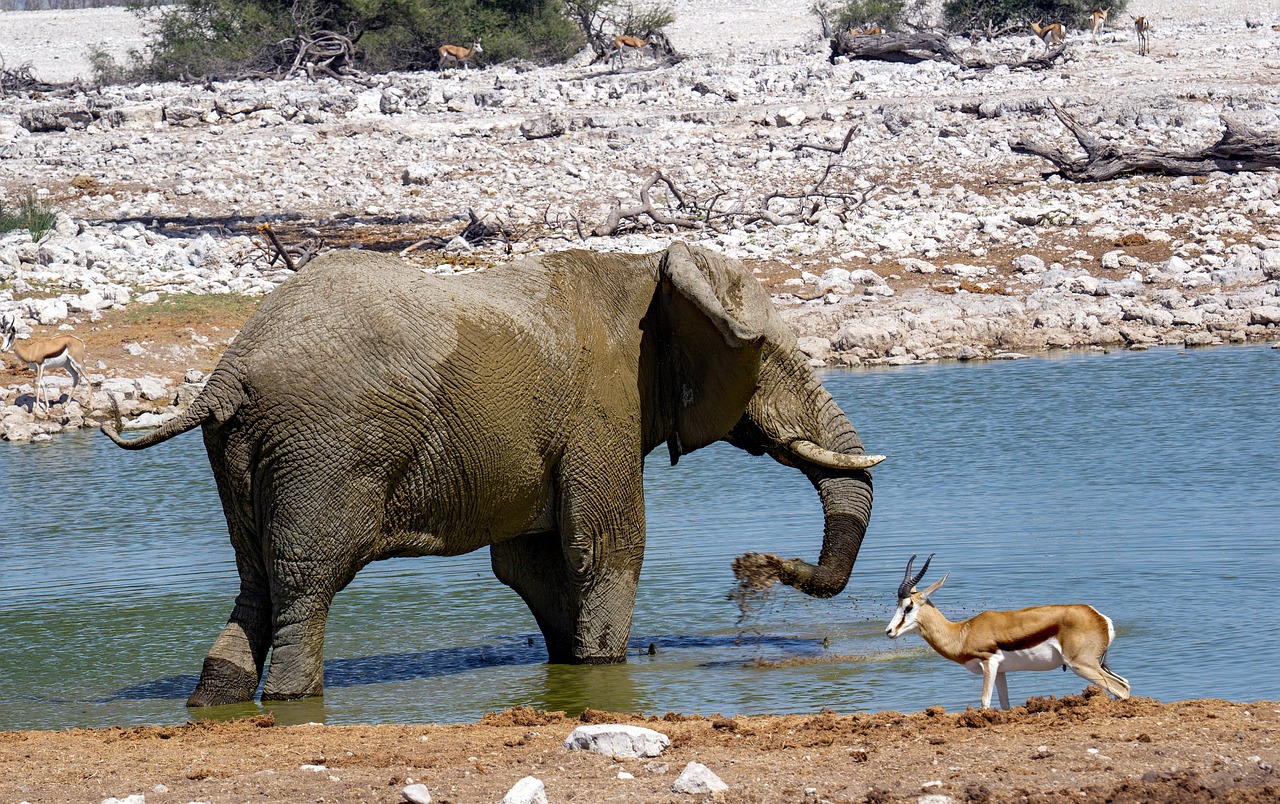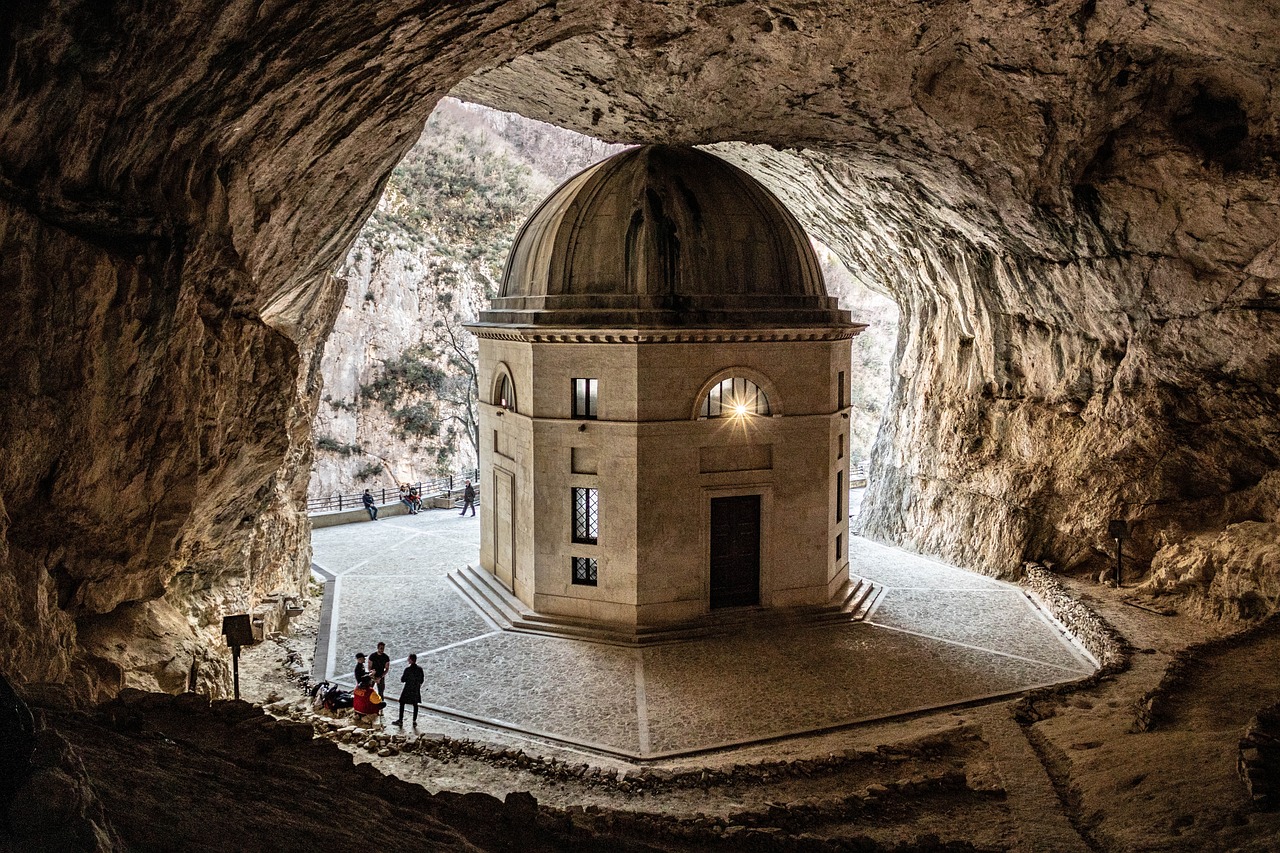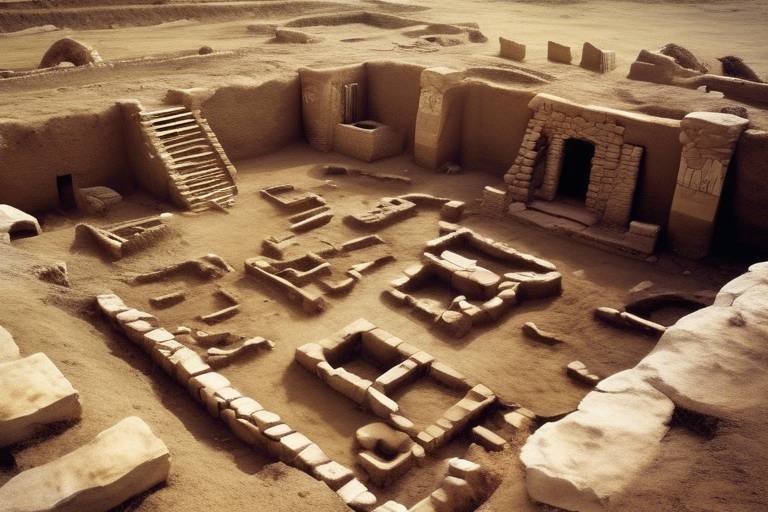The Cultural Significance of Australian Aboriginal Sites
Exploring the historical and spiritual importance of Australian Aboriginal sites reveals a deep connection to the land, stories, and traditions of the indigenous peoples. These sites serve as living records of the rich cultural heritage and spiritual beliefs passed down through generations. The landscapes are not just physical locations but are imbued with layers of history and significance that resonate with the soul.
Australian Aboriginal sites are not merely geographical landmarks; they are portals to the past, present, and future of a vibrant culture. The intricate rock art found in these sites tells stories of creation, survival, and spirituality. Each stroke of pigment on the ancient canvases carries the weight of centuries of knowledge and wisdom, inviting us to decipher the messages left by ancestors long gone.
The Dreamtime stories associated with Australian Aboriginal sites are like threads weaving through the fabric of time, connecting the past with the present. These myths and legends are not mere fables but are sacred narratives that guide indigenous communities in understanding their place in the cosmos. The Dreamtime is not a distant memory but a living reality that shapes the beliefs and practices of the Aboriginal peoples.
Within these sacred sites, ceremonial grounds stand as testament to the resilience and strength of indigenous cultures. Here, rituals, dances, and gatherings take place to honor ancestors, seek guidance from spirits, and celebrate the interconnectedness of all living beings. The ceremonial grounds are not just spaces for performance but are sanctuaries where tradition and spirituality converge.
Sacred waterholes dot the Australian landscape, serving as oases of spiritual nourishment and physical sustenance for indigenous communities. These natural springs are not just sources of water but are repositories of cultural knowledge, healing energies, and ancestral wisdom. The sacred waterholes are more than geographical features; they are embodiments of life-giving forces that sustain the body, mind, and spirit.
Burial sites hold a special place in Australian Aboriginal culture, embodying the reverence and respect for the deceased and the continuity of ancestral connections. Here, mourning rituals, ceremonies, and offerings are made to honor the departed and ensure their safe passage to the afterlife. The burial sites are not places of sorrow but of remembrance, where the spirits of the past mingle with the living.
Traditional songlines crisscross the Australian landscape, forming a intricate web of stories, songs, and pathways that connect indigenous peoples to the land and each other. These ancient routes are not just physical tracks but are conduits of cultural memory, spiritual power, and communal identity. The songlines are the heartbeat of the land, pulsating with the rhythms of creation and existence.
The colonial impact on Australian Aboriginal sites has been profound, with historical injustices, cultural disruptions, and ongoing struggles threatening the preservation of sacred heritage. The scars of colonization run deep, but indigenous communities continue to fight for the recognition and protection of their cultural sites, asserting their rights to self-determination and cultural sovereignty.
Despite the challenges faced, Australian Aboriginal sites remain relevant in contemporary society, serving as beacons of cultural revitalization, reconciliation efforts, and the promotion of indigenous knowledge and perspectives. These sites are not relics of the past but living embodiments of resilience, resistance, and renewal, reminding us of the enduring spirit and strength of the Aboriginal peoples.

Ancient Rock Art
Exploring the historical and spiritual importance of Australian Aboriginal sites, highlighting their connection to the land, stories, and traditions of the indigenous peoples. Understanding the preservation efforts and challenges faced in protecting these sacred locations.
Delving into the significance of ancient rock art found in Australian Aboriginal sites, showcasing the intricate designs and storytelling elements depicted on these sacred surfaces. The ancient rock art serves as a visual narrative, telling stories of the Dreamtime, depicting ancestral beings, and capturing the essence of indigenous cultural heritage. These artworks, often painted or engraved on cave walls or rock shelters, provide a glimpse into the rich history and artistic expression of the Aboriginal people.

Dreamtime Stories
Exploring the historical and spiritual importance of Australian Aboriginal sites, highlighting their connection to the land, stories, and traditions of the indigenous peoples. Understanding the preservation efforts and challenges faced in protecting these sacred locations.
The Dreamtime stories are the heart and soul of Australian Aboriginal culture, weaving a rich tapestry of creation myths, ancestral beings, and spiritual beliefs that have been passed down through generations. These stories are not just tales but a living connection to the land and the ancestors, shaping the cultural identity of indigenous communities.

Ceremonial Grounds
Ceremonial grounds hold a special place within Australian Aboriginal sites, serving as sacred spaces where rituals, dances, and gatherings are conducted to honor ancestors and uphold cultural traditions. These grounds are imbued with spiritual significance, acting as the physical link between the indigenous community and their ancestral past. The ceremonies held in these grounds are not mere performances but rather profound expressions of connection to the land and the spiritual realm.
At ceremonial grounds, the air is filled with the echoes of ancient songs and the rhythmic beats of traditional instruments, creating a powerful atmosphere that transcends time. The dances performed are not just movements but intricate storytelling through body language, conveying myths, histories, and spiritual teachings passed down through generations. It is a living connection to the past, a way of keeping the cultural flame alive in the present.
Participants in these ceremonies wear elaborate traditional attire, adorned with symbols and colors that carry deep cultural meanings. Each gesture, each step, is a deliberate act of reverence and respect for the ancestors and the spirits that inhabit the land. The energy of the ceremonies is palpable, drawing participants and observers into a shared experience of spiritual communion and cultural celebration.
These ceremonial grounds are not just physical locations but spiritual portals where the veil between the earthly realm and the Dreamtime is thin. They are places of transformation and renewal, where the community comes together to reaffirm their identity, strengthen their bonds, and seek guidance from the spiritual forces that govern their lives. The rituals performed here are a testament to the resilience and continuity of Aboriginal culture despite centuries of challenges and disruptions.

Sacred Waterholes
Sacred waterholes hold a profound significance in Australian Aboriginal culture, serving as more than just sources of water. These natural formations are revered for their spiritual importance, often believed to be portals to the Dreamtime, the mythical era of creation. Aboriginal communities view these waterholes as sacred sites where rituals, ceremonies, and healing practices are conducted to connect with ancestral spirits and seek guidance from the land.
The spiritual connection to sacred waterholes is deeply rooted in the belief that water is a life-giving force, essential for sustenance and spiritual renewal. Aboriginal elders pass down knowledge about these sacred sites through oral traditions, ensuring that the cultural practices and rituals associated with the waterholes are preserved for future generations. The stories and songs shared around these waterholes reflect the interconnectedness of the land, water, and people in Aboriginal culture.
Visiting a sacred waterhole is not merely a physical journey but a spiritual experience that requires respect, mindfulness, and an understanding of the cultural significance attached to the site. These locations are considered to be living entities, embodying the essence of the ancestral spirits and serving as places of reflection, meditation, and connection to the natural world.
Aboriginal communities gather at sacred waterholes for ceremonies that honor the land, express gratitude for the gifts of nature, and seek harmony with the spiritual forces believed to reside in the water. These gatherings are not only about rituals but also about strengthening community bonds, passing on traditional knowledge, and revitalizing cultural practices that have sustained Aboriginal peoples for thousands of years.

Burial Sites
Burial sites hold profound significance in Australian Aboriginal culture, serving as sacred grounds where ancestral connections are honored and respected. These sites are not merely resting places for the deceased but are imbued with spiritual meaning and cultural importance. The act of burial is a solemn ritual, symbolizing the return of the individual to the land and the continuation of their presence within the community.
Within the intricate network of Australian Aboriginal sites, burial grounds stand as monuments to the enduring ties between the living and the dead. The rituals and ceremonies associated with these sites reflect a deep reverence for ancestors and a profound understanding of the cycle of life and death. Each burial site tells a story, not only of the individual laid to rest but of the collective history and heritage of the indigenous community.
Visiting a burial site is a solemn and respectful experience, evoking a sense of connection to the past and the spiritual essence of the land. The rituals and protocols observed at these sites emphasize the ongoing presence of ancestors in the lives of the living, reinforcing the continuity of cultural practices and traditions across generations.
At the heart of Australian Aboriginal culture, burial sites serve as physical manifestations of the spiritual beliefs and ancestral connections that define the indigenous worldview. These sacred grounds are not simply places of remembrance but are living repositories of cultural knowledge and wisdom, embodying the resilience and enduring spirit of the Aboriginal people.

Traditional Songlines
Exploring the historical and spiritual importance of Australian Aboriginal sites, highlighting their connection to the land, stories, and traditions of the indigenous peoples. Understanding the preservation efforts and challenges faced in protecting these sacred locations.
Delving into the significance of ancient rock art found in Australian Aboriginal sites, showcasing the intricate designs and storytelling elements depicted on these sacred surfaces.
Unraveling the mystical Dreamtime stories associated with Australian Aboriginal sites, revealing the creation myths, ancestral beings, and spiritual beliefs embedded in the land's cultural fabric.
Exploring the role of ceremonial grounds within Australian Aboriginal sites, discussing the rituals, dances, and gatherings that take place to honor ancestors and maintain cultural traditions.
Examining the importance of sacred waterholes in Australian Aboriginal sites, illustrating their role in spiritual practices, healing ceremonies, and as sources of life and sustenance for indigenous communities.
Reflecting on the significance of burial sites in Australian Aboriginal culture, discussing the respect, mourning rituals, and ancestral connections associated with these sacred grounds.
The concept of traditional songlines in Australian Aboriginal sites is a profound aspect of indigenous culture. Songlines are intricate pathways that crisscross the land, connecting significant sites and landmarks through songs, stories, and ceremonies. These songlines serve as a spiritual map, guiding indigenous peoples in their journeys and preserving the oral traditions that pass down ancestral knowledge and cultural heritage. They are the living embodiment of the deep connection between the land, the people, and the stories that bind them together.
Addressing the colonial impact on Australian Aboriginal sites, examining the historical injustices, cultural disruptions, and ongoing struggles faced by indigenous communities in preserving their sacred heritage.
Discussing the contemporary relevance of Australian Aboriginal sites, emphasizing their role in cultural revitalization, reconciliation efforts, and the promotion of indigenous knowledge and perspectives.

Colonial Impact
When examining the on Australian Aboriginal sites, one cannot ignore the deep scars left by the tumultuous history of colonization. The arrival of European settlers brought about a seismic shift in the cultural landscape of the indigenous peoples, leading to the desecration and destruction of sacred sites that held generations of spiritual significance. The imposition of foreign laws and ideologies resulted in the marginalization and displacement of Aboriginal communities, severing their connection to the land and eroding their traditional practices.
The reverberates through time, echoing in the ongoing struggles faced by indigenous communities in preserving their sacred heritage amidst modern development and encroachment. The legacy of colonialism is imprinted on the very fabric of Australian society, manifesting in the systemic inequalities, social injustices, and cultural erasure experienced by Aboriginal peoples to this day. Despite efforts towards reconciliation and cultural revitalization, the wounds inflicted by centuries of colonial oppression continue to shape the lived realities of indigenous Australians.

Contemporary Relevance
Exploring the historical and spiritual importance of Australian Aboriginal sites, highlighting their connection to the land, stories, and traditions of the indigenous peoples. Understanding the preservation efforts and challenges faced in protecting these sacred locations.
Australian Aboriginal sites hold immense contemporary relevance in today's society. These sites serve as living testaments to the rich cultural heritage and spiritual practices of the indigenous peoples. They play a crucial role in cultural revitalization efforts, allowing current generations to reconnect with their ancestral roots and traditions.
Moreover, Australian Aboriginal sites are pivotal in reconciliation efforts between indigenous communities and the wider society. By acknowledging and respecting the significance of these sacred locations, there is an opportunity to foster understanding, empathy, and mutual respect between different cultural groups.
Furthermore, these sites serve as platforms for promoting indigenous knowledge and perspectives. They offer valuable insights into sustainable practices, environmental stewardship, and holistic approaches to community well-being. By recognizing and honoring the wisdom embedded in these sites, society can learn from and collaborate with indigenous communities for a more harmonious future.
In essence, the contemporary relevance of Australian Aboriginal sites lies in their ability to bridge the past, present, and future. They are not just relics of bygone eras but living embodiments of cultural resilience, creativity, and spirituality that continue to inspire and educate people from all walks of life.
Frequently Asked Questions
- What are Australian Aboriginal sites?
Australian Aboriginal sites are locations of cultural, spiritual, and historical significance to Indigenous Australian peoples. These sites often hold stories, traditions, and connections to the land that are vital to the cultural identity of Aboriginal communities.
- Why are Australian Aboriginal sites important?
Australian Aboriginal sites are important as they preserve the rich cultural heritage and traditions of Indigenous Australians. They serve as repositories of knowledge, spirituality, and history, providing insights into the deep connection between Aboriginal peoples and the land.
- How are Australian Aboriginal sites protected?
Australian Aboriginal sites are protected through various means, including legislation, community efforts, and cultural awareness programs. Indigenous communities, government bodies, and conservation organizations work together to safeguard these sites from damage, vandalism, and encroachment.
- Can the public visit Australian Aboriginal sites?
Visiting Australian Aboriginal sites is a sensitive issue, as some sites are restricted or require permission to access due to their sacred nature. It is essential to respect the cultural protocols and guidelines set by the traditional owners when visiting these sites.
- What is the significance of Dreamtime stories in Australian Aboriginal culture?
Dreamtime stories are foundational narratives in Australian Aboriginal culture that explain the creation of the world, the actions of ancestral beings, and the spiritual beliefs of Indigenous peoples. These stories are passed down through generations and are integral to understanding Aboriginal cosmology and identity.



















